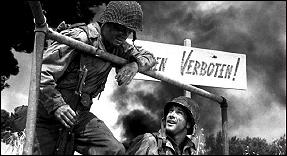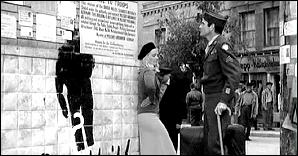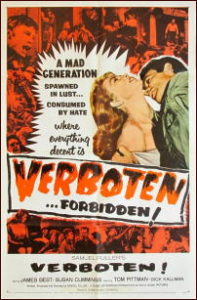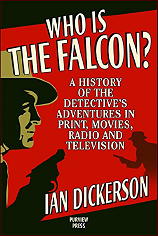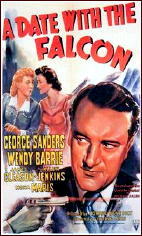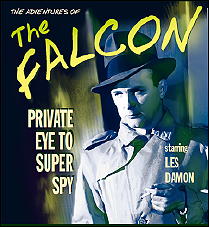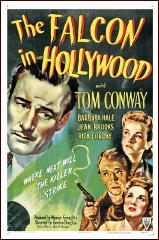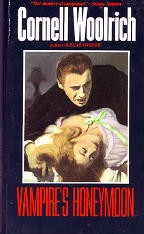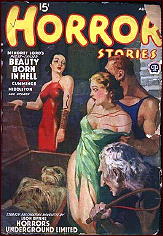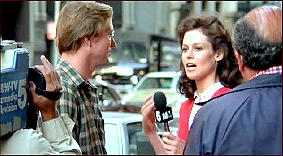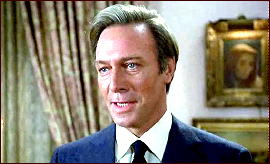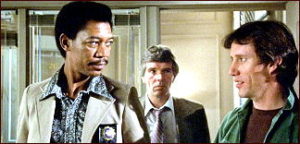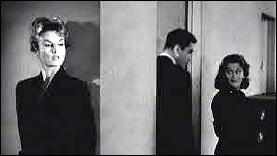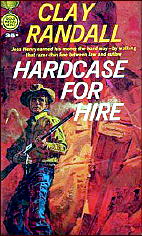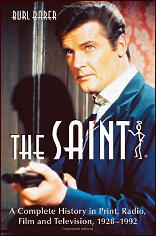FIRST YOU READ, THEN YOU WRITE
by Francis M. Nevins
The timing couldn’t have been worse. If I had learned of his death a few weeks sooner I would have made him the subject of last month’s column, which was centered on the year 1930. The year he was born.
Donald A. Yates’ birthplace was Ayer, Massachusetts. In 1936 his family moved to Michigan and he spent his formative years in Ann Arbor, where in his teens he met and became close friends with local detective novelist H. C. Branson, to whom someday I must devote a column. He entered the University of Michigan in 1947, choosing pre-law as his major because he “had consumed dozens of Erle Stanley Gardner’s Perry Mason novels and was entranced by the prospect of becoming myself a crackerjack courtroom lawyer.â€
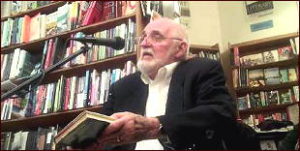
But after finding one of his courses “so cut and dried, dusty and lacking in drama and emotion†and learning that most of the courses he’d need to take were of the same ilk, he switched his major to Spanish and graduated in 1951. After two years in the Army he returned to academia and earned his M.A. and Ph.D., the subject of his doctoral dissertation being Argentine detective fiction. He joined the Michigan State faculty in 1956 and remained a professor until 1982 when he took early retirement.
I first met Don in the late 1960s when he was teaching Spanish and Latin American literature at Michigan State and I was fresh out of law school. He had been a professor for more than ten years and had made a name for himself as a translator of the now internationally renowned Jorge Luis Borges (1899-1986), who was little known outside his native Argentina until the early 1960s.
Like Poe, Borges wrote all sorts of literary works: poetry, essays, fantasies, and some landmark detective-crime stories that were like no others ever written before or since. It was one of these, “The Garden of Forking Paths,†translated by Anthony Boucher and published in Ellery Queen’s Mystery Magazine (August 1948), which first introduced Borges to a wide English-language audience.

But he remained relatively obscure until a few years after Don had begun his career at Michigan State. He had become interested in Borges while studying for his doctorate, and LABYRINTHS (New Directions, 1962), edited by Don and another young professor named James E. Irby, was one of the first collections of the Argentine’s work to appear in English, published almost simultaneously with FICCIONES (Grove Press, 1962), with which Don was not connected.
Together the two volumes established Borges’ reputation as a titan of international literature. Among the now classic crime stories collected in LABYRINTHS with Don serving as translator were “The Garden of Forking Paths†(why Boucher’s translation wasn’t used remains a mystery) and “Emma Zunz,†which today has been rendered politically incorrect almost to the point of unrevivability by time, feminism and the Holocaust.
Don’s LABYRINTHS translation of another now world-famous Borges detective story, “Death and the Compass,†originally appeared in the Mystery Writers of America anthology TALES FOR A RAINY NIGHT, edited by David Alexander (Holt, Rinehart & Winston, 1961). Fred Dannay was offered the translation first but, for reasons that remain unclear, turned it down.
Don was under the impression that Fred thought it “too far above the heads of the magazine’s readers†but, unless my aging memory has deceived me, Fred told me that the Borges story, which had first been translated several years before, had struck him as too similar to the plot of the Queen novel THE PLAYER ON THE OTHER SIDE, which he was either working on at the time or had recently completed. “Death and the Compass†appeared in EQMM for August 2008, long after Fred’s death.
During the decades following the Sixties, Don’s translations of various Latin American crime stories appeared in EQMM and elsewhere. Among the authors whose appearances in English were to his credit are Augusto Mario Delfino, Marco Denevi, Alfonso Ferrari Amores, Antonio Hel_, Maria de Montserrat, Manuel Peyrou, Hernando Tell_z and Rodolfo J. Walsh.

In the early 1970s the Catholic religious publisher Herder & Herder was bought by McGraw-Hill and expanded into several new areas. It was for Herder that Don edited LATIN BLOOD (1972), an anthology of mystery tales from Central and South America, which includes three stories by Borges: the by now much reprinted masterpieces “The Garden of Forking Paths†and “Death and the Compass†plus the unfamiliar, rousingly Chestertonian “The Twelve Figures of the World†(co-authored by Borges’ longtime friend Adolfo Bioy Casares).
Don also translated for the same publisher Manuel Peyrou’s THUNDER OF THE ROSES (1972), a murky and labyrinthine political thriller with detective overtones, set in an imagined variant of the Third Reich and heavily indebted for its plot elements to Borges. The morning after dictator Cuno Gesenius has been murdered, a tormented intellectual named Felix Greitz publicly assassinates Gesenius’ double. Did Greitz think he was killing Gesenius? Was he trying to protect his own wife, a member of the anti-Gesenius underground who disappeared shortly before the dictator’s death? Did he kill Gesenius and then shoot the double to convince the authorities he didn’t know the dictator was already dead?
Police inspector Hans Buhle saves Greitz from execution on condition that he work inside the underground to expose Gesenius’ murderer. Whether he or Buhle or we ever find out or are meant to find out the truth is debatable. That seems to be the purpose of Peyrou’s Borgesian labyrinth: to make us perpetually uncertain.
In his introduction Borges compared Peyrou with Dostoevski and praised the novel’s “shrewd interrogations and treacherous dialogues; the spheres of the search and of what is sought are interwoven and become confused. We experience the melancholy that is the attribute of any dictatorship, the systematic oppression of stupidity, but also mockery and courage. I do not hesitate to declare that Manuel Peyrou is one of the first storytellers of Hispanic letters.â€
In 1969, when Borges was in the States on a lecture tour, Don invited me to have lunch with the great Argentine and his then wife. Knowing very little about Borges at that early stage of my life and my relationship with Don, I can recall nothing of what we said over the meal. I do remember that while we were eating a man with a camera came to our table and requested permission to take a picture. Borges agreed. The man told him to say Cheese. “Might I say Chesterton instead?†Borges asked. As I hinted above, GKC was always one of his favorites.
Over the decades Don wrote several detective short stories of his own. One of his earliest, written during his time in the military, was “The Wounded Tyrolean,†which was based on a cryptic reference in Ellery Queen’s THE SPANISH CAPE MYSTERY (1935) to a case the great sleuth was unable to solve. The tale, which has no connection with EQ except that its title comes from an allusion in a Queen novel, wasn’t published until well over half a century later when it appeared in the Fall 2012 Michigan Quarterly Review.
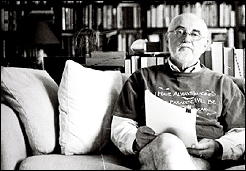
Don’s earliest published story that I’m aware of is “Inspector’s Lunch,†which appeared in something called the Birmingham Town Hall Magazine back in 1955 and was reprinted in The Saint Mystery Magazine for May 1959; the most recent (except for the Wounded Tyrolean tale) is the Sherlockian “A Study in Scarlatti†(EQMM, February 2011).
Don was an enthusiastic Baker Street Irregular, being invested as “Mr. Melas†(The Greek Interpreter) back in 1960 and founding a Napa Valley branch of the Irregulars after he retired from Michigan State and moved to California’s wine country. Well into his final years he’d fly into New York for the annual BSI dinner whenever his failing health permitted.
As the Wounded Tyrolean anecdote suggests, Don was a devotee of Ellery Queen from an early age. When he was 16 he took a bus from Massachusetts to Manhattan and visited with Ellery’s co-creator Fred Dannay, the beginning of a friendship that lasted until 1982 when Fred died. In 1979, during an elaborate dinner at New York’s Lotos Club celebrating the 50th anniversary of the publication of the first Queen novel, THE ROMAN HAT MYSTERY, Don paid two heartfelt tributes to EQ. One was what he called an acrostic sonnet, with the first letters of each of the fourteen lines spelling out the name FREDERIC DANNAY. The second, on a more lighthearted note, was a song to be sung to the tune of the Mickey Mouse Club theme, with the last line, where Mickey’s name is spelled out, being replaced with E-L-L-E-R-Y Q-U-E-E-N. Both Fred and I heard Don sing that song. I wish I had a copy.
For most of the world the great author with whom Don was associated was Borges, but personally I was more interested in another writer with an international reputation: Cornell Woolrich, the Hitchcock of the written word. Don first met Woolrich at the Mystery Writers of America awards dinner in 1961. What followed, Don wrote, was “a long and glorious evening, the first of many…that I would spend doing the nightspots with him, with this lonely writer who would never let you say goodbye until daylight was in the street.â€
On his frequent trips from East Lansing to South America and back on various Fulbright grants Don often stopped off in Manhattan and spent time with Woolrich, getting to know that haunted recluse as well as he allowed himself to be known. Woolrich died in September 1968, and I believe it was on the visit the following year during which Don introduced me to Borges that he read to me from a memoir he had written about the master of suspense. Many years later I included excerpts from it with his permission in my Woolrich book FIRST YOU DREAM, THEN YOU DIE (1988). The final version of his memoir can be found in THE BIG BOOK OF NOIR, edited by Ed Gorman, Lee Server and Martin H. Greenberg (Carroll & Graf, 1998).
He died at his home in St. Helena on October 17, 2017, with his wife Joanne and their beloved dogs at his side. The cause was aplastic anemia, a condition which develops as a result of bone marrow damage. As most readers will remember, October was the time when the Napa Valley wine country was plagued by wildfires. I became concerned about Don and called him. His house was still intact, he told me, but he and Joanne had packed their bags and, with their dogs, were ready to leave on a moment’s notice.
I never heard from him again. It must have been soon after our conversation that he died. In his final years he was working on a memoir of Borges which, so Joanne tells me, remains unfinished. If she can turn the raw material into a book, it will be a tribute to one of the most fascinating people I knew during much of my adult lifetime. And to another fascinating man I only met once.
